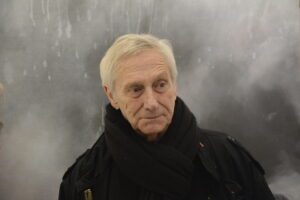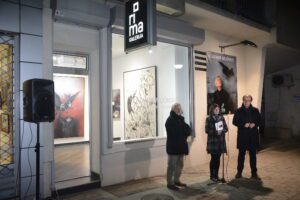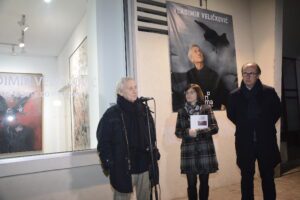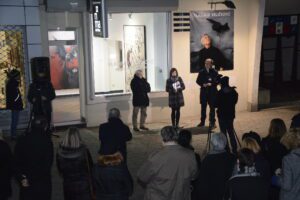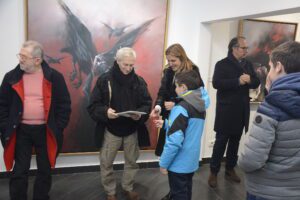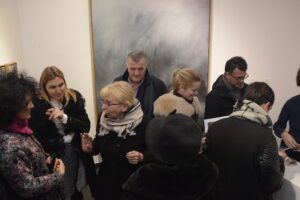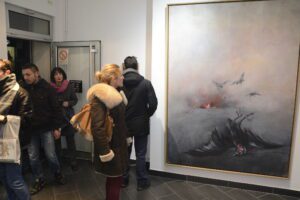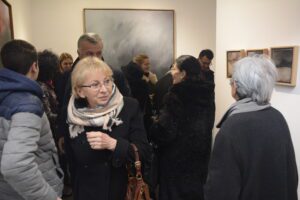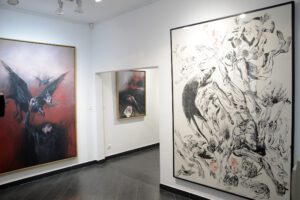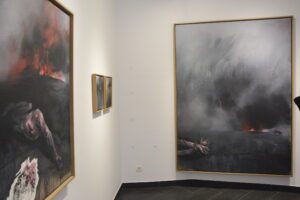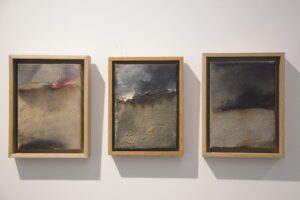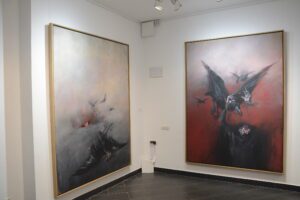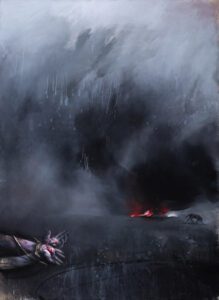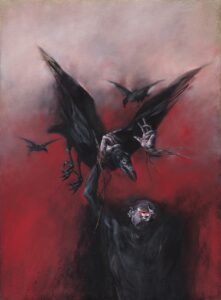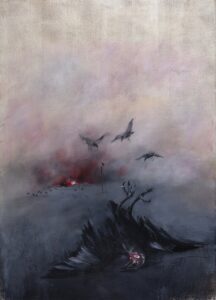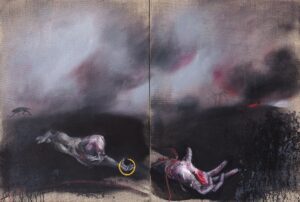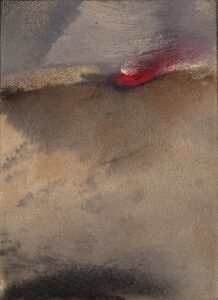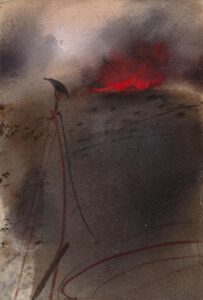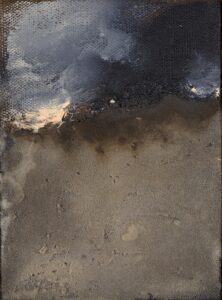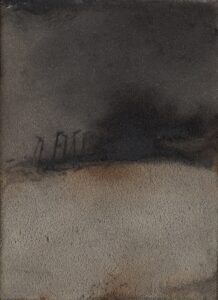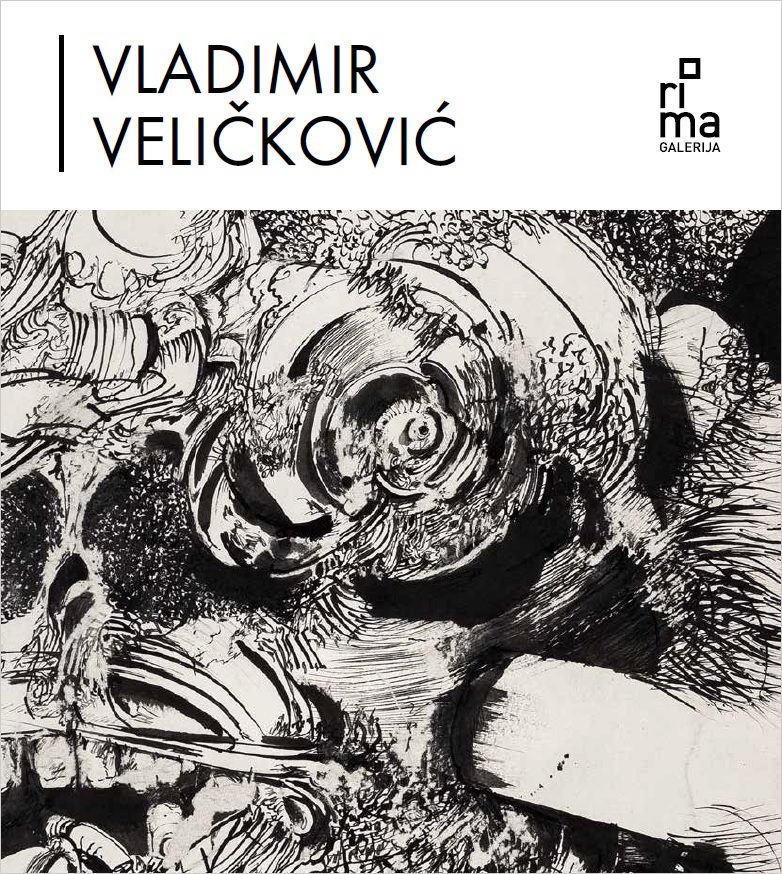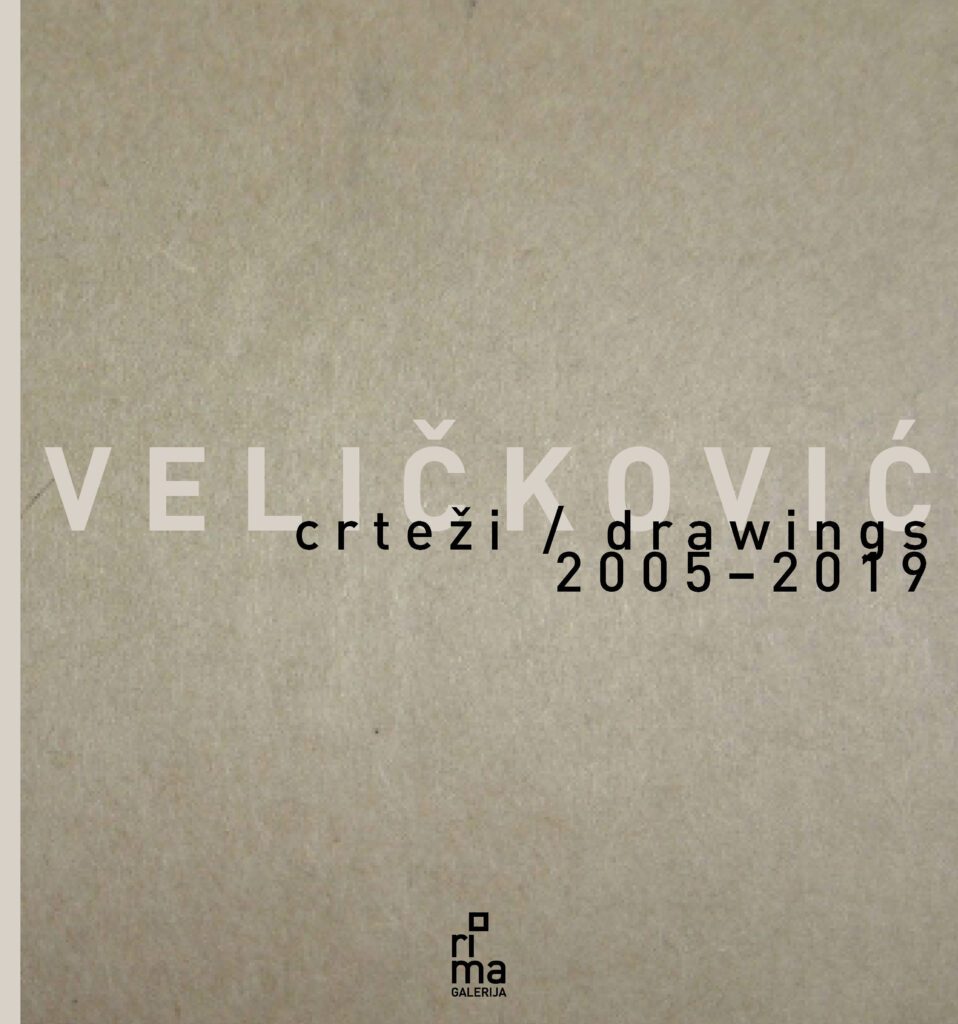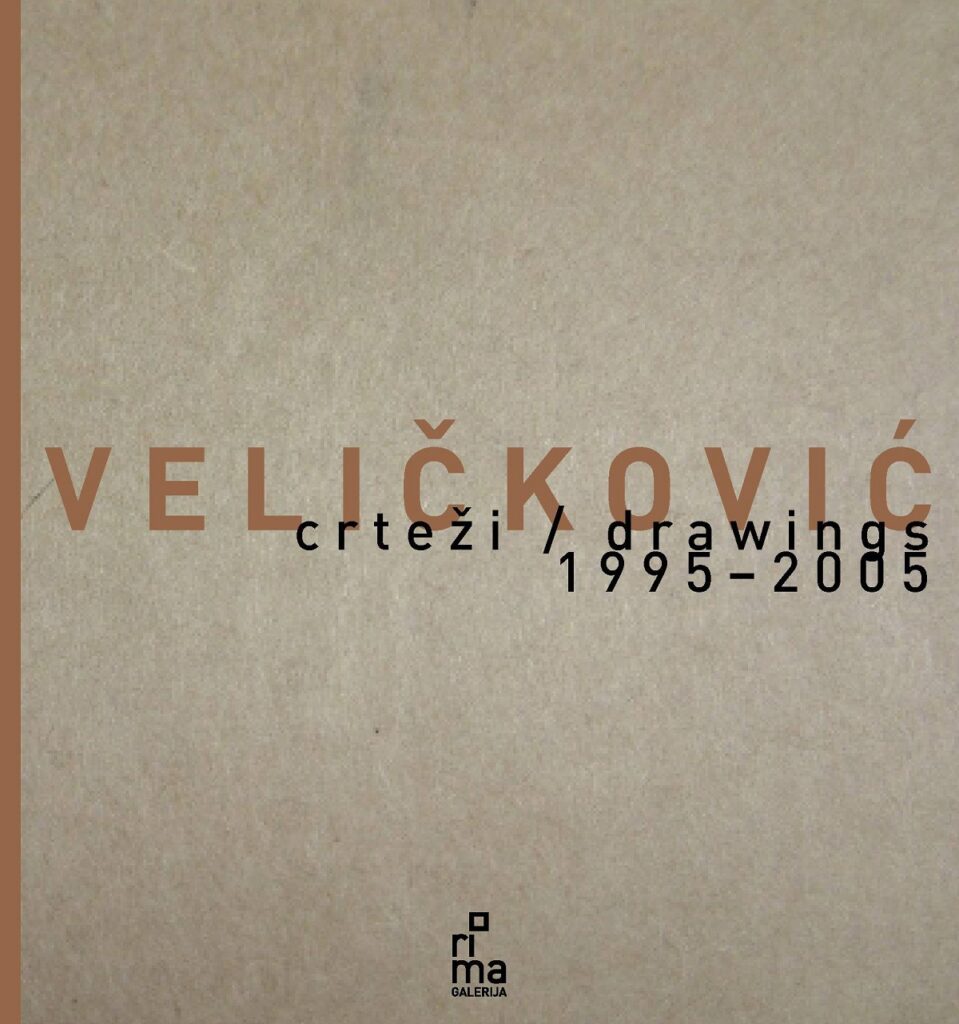Nevena Martinović
THE SYMBOL AND REALITY IN THE HANDS OF VLADIMIR VELIČKOVIĆ
Vladimir Veličković has stepped into the third millennium of the history of human civilisation seized by the latest conflagration. His man has stopped running, he has fallen, death has caught up with him and thrown him into the in nite expanse of nothingness. In the thick smoke full of ashes the last of the oxygen is spent on the burning of distant res and the pulsating flaming wounds on the corpses. Nevertheless, what ends by the extinguishing of life in Veličković’s picture has remained the vital strength of its creation.
Veličković’s bodies and spaces map diverse forms of unbridled aggression as one of the main human instincts. Since the earliest works his painting has been on the side of Thanatos and with its thematic continuity is an evidence of indestructible destructive human instincts, and death as their final effect. In his latest works, produced in 2016–2017, Veličković is still hypnotically observing the deepest abyss of human psyche. The nightmarish landscapes – burnt earth, desecrated corpses with bound hands, flames consuming the gallows and crucifixions on the horizon, a grey sky coloured with the smoke and ashes, decapitated hounds and flocks of crows as chthonian beings, the sole inhabitants of these spaces of death – all of them are authentic painter’s visions of the final fall of man who is destroying his species, his habitat and finally himself. The circumstances surrounding Veličković have constantly supplied evidence of human monstrosity as renewable sources of „inspiration“. From the scenes of those killed in the Second World War, for ever imprinted in his childish memory, over the reports and photographs from the civil war that destroyed his
homeland – Yugoslavia, to the terrorist attacks in Paris and the rest of the world. The reality which has repeatedly brought Veličk- ović back into the atmosphere of horror and made him remain there, but not only on the topical level, not just as an external scene that becomes the visual point of departure, but as an emotional thrust that stirs up the internal chaos, feeding and fostering the ag- gressive and (self)destructive instincts in man: Undoubtedly, there exists within me a war that cannot be removed or healed by global happenings; they only make it more alive.
The same eruptive force is the potential given to us as a basic means of survival. Within our cells and organs there is a process which he (Veličković, author’s remark) follows in its complexity and both positive and negative tensions, outside of our cultural references. Man is the only being in the world able to control his instincts by his own will and to ignite by that boiling life engine both negative and positive aspects of his self. To move the effect of instinctive forces to the other pole of his activity, from destruction to creation. Such a revolution is happening in Veličković, in the space and time that separate the external scenes of barbarity from their final cathartic representation in the picture. That intercourse is the concrete creative act where destruction is turned into creation by means of those alchemically unreachable forces. The creation of Vladimir Veličković, understood as a complex concept that encompasses both the artist and his work, or the creation and the created, is an exceptional example of the relationship of the two extremes in man. On the one hand, Veličković’s pictures refer to man the monster, to the one who stabs, decapitates, cuts, tortures, kills and burns the other man with his liberated crude aggression and turns him into nothingness. On the other hand, Veličković’s painterly/draughtsman’s procedure is an event where the entire instinctive driving energy is directed into a creative stroke and through creation transforms man into the creator. With the scratching of the pen into the whiteness of the paper or by pressing one’s finger into the sediment of paint on the canvas, Veličković experiences a cathartic effect, realises his greatest internal pleasure and reaches happiness. That pleasure is not only abstract – conceptual and emotional, but also expressly physical. It lies in the sensual sensations that accompany the creation of a picture, first of all in the tactile relation to the picture, gradually becoming ever more intimate moving from the brush to palm contact and painting with fingers. Marc Le Bot noticed that Veličković treated his painterly material as the body, or the layer of paint as something corporeal so that his picture appears to be a pulsating living body.3 Veličković’s early inclination to big formats, slowly outgrowing human dimensions, indicated the artist’s need to achieve the liberation of body through the act of painting. To create, by creating the painting, a space that fits his vital energy. Veličković’s need for physical-spatial unrestraint is answered fully by his impressive studio where the artist is able to move away from his paintings and attack them from the distance in an intellectual and bodily run-up. Every day the artist spends hours working on several big formats at the same time, walking from one canvas to another, painting standing up, bent or standing on the ladder, moving closer, moving away, going and returning – in constant movement. Even when he is drawing Veličković stands bent over the table or puts the paper upright, like a canvas. The making of a big format drawing, like the Bodies, which the artist himself calls his little foolishness, gives Veličković ultimate pleasure – the kind of pleasure one cannot describe in words. While the work on a painting needs a longer time of planning and thinking, including interruptions and prolongation of the pleasure, drawing unites the thought and its embodiment through the artist’s physical movement, in a momentary, instinctive and uninterrupted trance. In that trance, the painter attacks the whiteness of the paper by the pen as if it were a sharp and dangerous sword for drawing, he experiences his procedure as confrontation, and reveals the aggressive character of the energy that moves him: I delight in the scratching sound while I am drawing, in the resistance of the paper that does not give in and which I have to tear with the pen. Irina Subotić has noticed that the aggressiveness of the thematic context is transformed into an aggressive draughtsman’s procedure, by which the artist achieves full harmony between his intention and goal, and the result.7 Therefore, when the drawing is de ned as the back- bone of the entire Vladimir Veličković’s painting it equally refers to the understanding of the drawing as the visual foundation of the painting and the drawing as action in which the artist realises himself and gives fresh impulse to his self-preservation that feeds his own vitality: If something prevented me from drawing I would either begin to kill others or would jump out of the window. It is my everyday need. The work that is equivalent to my existence. The hurricane of complex internal impulses – the libidinal energy, deposited experiences of the world, reactions from memory and momentary encounters with the reality, emotions and conceptual constructs – is transformed, under the pressure of inspiration and by means of the physical act of production, into the creation and a noble effect. This is the artist’s victory over the same fear-inspiring forces he shares with the monsters from his nightmarish visions.
(Complete text in printed edition)
